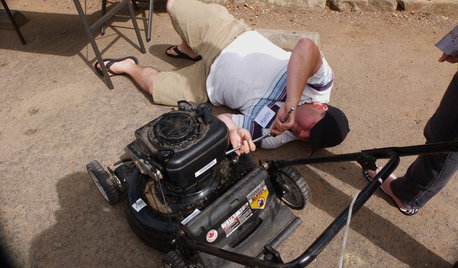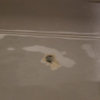Fixing a cord?
socks
14 years ago
Related Stories

DIY PROJECTSHow to Fix Up a Thrifted Lamp
Save money and earn DIY cred by rewiring and snazzing up a damaged lamp you scored on the cheap
Full Story
LIFEYou Showed Us: 20 Nutty Home Fixes
We made the call for your Band-Aid solutions around the house, and you delivered. Here's how you are making what's broken work again
Full Story
LIFEHouzz Call: Show Us Your Nutty Home Fixes
If you've masterminded a solution — silly or ingenious — to a home issue, we want to know
Full Story
GARDENING AND LANDSCAPINGSpring Patio Fix-Ups: 6 Ways to Light Your Outdoor Room
Let the good times roll well into the evening with string lights, sconces, pendants and more to illuminate your patio or deck
Full Story
REMODELING GUIDESQuick Fix: Easy Toe-Kick Lighting
Here's a cost-effective way to give your kitchen or bath an unexpected glow
Full Story
EVENTSDon't Throw Away Another Household Item Before Reading This
Repair Cafe events around the world enlist savvy volunteers to fix broken lamps, bicycles, electronics, small appliances, clothing and more
Full Story
DIY PROJECTSHow to Replace a Button on a Tufted Chair
Fix a popped button on a tufted chair back with this upholstery teacher's step-by-step tutorial
Full Story
SELLING YOUR HOUSE10 Low-Cost Tweaks to Help Your Home Sell
Put these inexpensive but invaluable fixes on your to-do list before you put your home on the market
Full Story
UPHOLSTERYFurniture Clinic: End the Curse of Slouchy Couch Cushions
Prolong the life of your couch with this inexpensive fix that’s so easy, even a beginning sewer can do it
Full Story
HOME TECHWhat Chipotle and Radiohead Can Teach Us About Sound Quality at Home
Contemporary designs filled with glass and concrete can be hostile environments for great sound quality. Here's how to fix that
Full StoryMore Discussions








macv
socksOriginal Author
Related Professionals
Lincoln Kitchen & Bathroom Remodelers · Portage Kitchen & Bathroom Remodelers · Hainesport General Contractors · Claremont General Contractors · Hutchinson General Contractors · Kettering General Contractors · Kilgore General Contractors · Murrysville General Contractors · Red Wing General Contractors · Union Hill-Novelty Hill General Contractors · Fort Collins Painters · Berea Painters · Lakewood Painters · Newberg Painters · San Anselmo Paintersmacv
sdello
randy427
sdello
macv
brickeyee
macv
sierraeast
brickeyee
macv
brickeyee
macv
brickeyee